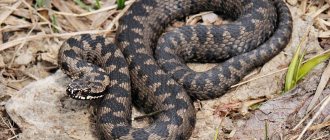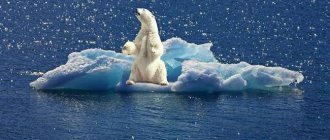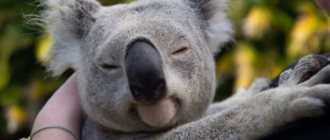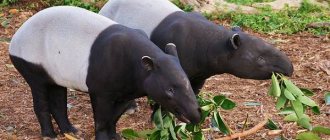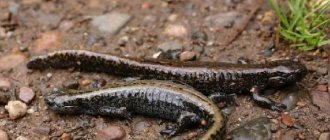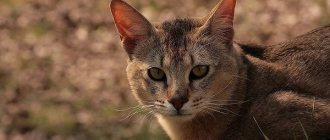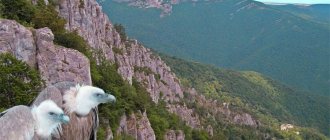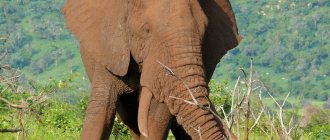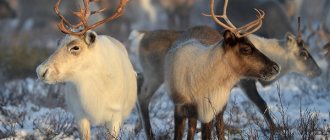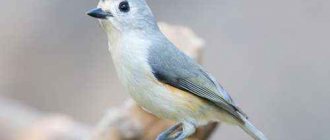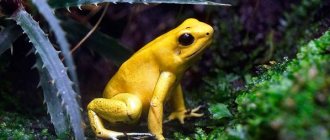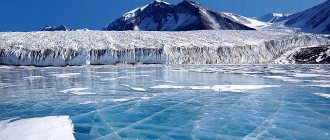From a bird's eye view, the lake looks like a big eye. Baikal is magically blue in summer and green in winter. This is the deepest lake on the planet. Although its true depth is still disputed. Baikal changes its color throughout the year. Where is Baikal? What kind of inhabitants can you find here? What will please the plant world? All this will be discussed in the article.
Baikal seals
All the inhabitants of this amazing natural reserve are calm about the presence of people, to whom they are accustomed thanks to developed ecotourism. But the most popular animals of Lake Baikal for tourists’ photos and videos are, of course, seals.
In fact, Baikal seals are seals. These charming hulks are on the verge of extinction due to many years of activity of enterprises dumping waste into the lake, and at the moment the Baikal seal species is protected very seriously, literally every animal has its own chip and “observers”.
Scientists are still arguing about how these cute little animals ended up in the isolated waters of the lake. The most reliable theory seems to be about migration during the glaciation period from the Arctic Ocean.
Seals spend almost all their time in the water, surfacing to take air into their lungs. On nice, warm days, especially in early autumn, they change their habit and go to the shore or reef to lounge and soak up the sun.
They winter near the coasts, in hummocky areas, under the snow, and also use the wintering ground for reproduction. Female Baikal seals mature earlier than males, reaching sexual maturity by 4-4.5 years, while “boys” begin to be interested in them only at 5-6 years.
The female's pregnancy lasts 11 months, and babies are usually born from February to mid-April. Moreover, females can give birth up to 40-45 years, despite the fact that seals live for about 50 years under favorable conditions. Few babies are born, usually one cub, rarely two. Newly born seals weigh 3.5-4 kg and are covered with snow-white fur.
The weight of an adult animal varies from 50 to 150 kg; the seal gains it throughout its life, feeding on fish, mainly golomyanka-goby breeds, eating 4-5 kg of fish per day.
In a year, each of these cuties can eat about a ton of fish, while the seal remains a very graceful swimmer, developing a speed of 20-25 km/h if necessary.
Other inhabitants of the lake
In addition to mammals, birds and reptiles of Lake Baikal are also abundant.
Birds
The number of feathered representatives of the region includes more than 236 species, of which 29 species are found only in this area.
Saker Falcon
This species belongs to the falcon family . The bird is smaller than its relatives from warm regions. It is not larger than a large crow. It feeds on small rodents and fish from shallow waters. The saker falcon lives in trees and builds small nests.
Very rarely this bird can be found in mountainous areas. A distinctive feature of the bird is its bright gray-brown color. The bird is also listed in the Red Book. The reason for the population decline is deforestation.
White-tailed eagle
This species of bird of prey lives directly near Lake Baikal. The reason for this: the diet of the bird. The eagle feeds on fish from shallow pools . The bird is large. The wingspan of males reaches 1.5 meters.
The eagle nests in tall trees or in mountainous areas. Capable of rising to a height of 5-7 kilometers. Most of the bird's life is spent in flight, during hunting.
Sandpiper
A small agile bird. Lives near small pools. It feeds on small fish, crustaceans and insects. A distinctive feature is the ability to run quickly along the shore and shallow water. The bird's long, thin beak is also unique.
Waders nest in tall bushes or treetops. The main enemy of birds is snakes. They eat eggs and small hatchlings. Waders have a unique sandy coloration: white feathers below and brown feathers on the back and sides.
Mallard
This species of duck is a unique representative of the lake . Compared to its relatives, the mallard is 1.5-2 times larger and heavier. The mallard also has a unique coloration: a dark green head, bright yellow beak, orange back and brown breast. The bird exhibits such brightness only in the warm season.
With the arrival of winter, the color fades significantly. A mallard builds nests in tall thickets on the shore of a lake. Females can lay up to 10 eggs per season. With the arrival of frost and icing of the coastal zones of the lake, the bird flies to the South.
Great Curlew
This species of bird is from the snipe family. Also a sandpiper. A distinctive feature is the long thin beak . The bird feeds both on water and on land. The main diet is small fish, crustaceans, insects, and small reptiles. Curlew are larger than ordinary waders. Adult males reach 60 cm.
The second distinctive feature of the bird is the ability to imitate the sound of a flute. Such trills can only be heard in spring. Representatives of this species nest in thickets and trees. The female is capable of hatching up to 4 eggs. Young chicks grow very quickly and differ from adults only in their lighter plumage.
Reptiles
According to rough estimates, about 45 species of reptiles live on the territory of Lake Baikal.
Mongolian toad
A striking representative of the cold-blooded animal world . The population of the Mongolian toad in Lake Baikal is greatly declining. The reason for this: sudden temperature changes and unstable climate.
This representative has a small body, only up to 8 cm. It feeds on coastal insects, larvae and small fish. It is distinguished by its bright white-green color.
Spotted Cottonmouth
Dangerous representative of the animal world . Cottonmouths live in tall thickets on the shore of a lake or closer to tall trees. The Baikal species of these snakes reaches a length of up to 80 cm. The main feature of this species is the presence of large spots along the entire length of the body.
Patterned runner
Belongs to the snake family. Not poisonous. The body length of the largest individuals does not exceed 1 meter. The color of the snake is dominated by brown shades with large dark spots. The animal feeds on small rodents, birds and eggs. The number of this species is also sharply declining due to deforestation and lack of food.
Viviparous lizard
A special type of lizard . Spends most of its life in hibernation due to sharp temperature fluctuations. The lizard is small, only up to 15 cm long.
It got its name because the cubs quickly hatch from eggs (within 1 minute). They feed mainly on larvae, insects and small eggs.
Already ordinary
The most numerous species on the territory of Lake Baikal. This snake feels great both in water and on land. It is not poisonous. Spends most of its time on land, basking on warm stones.
This species feeds on small fish, eggs and chicks, insects and rodents. The length of the largest individual can reach 1.5 meters.
Moose
Elks live throughout Eurasia, but these animals are rare , as they differ from all other moose, primarily in size. On average, the weight of an elk living on the lake coast is 400, but many males exceed 500 kg.
The height of these beauties at the withers at their lower limit is 2.5 meters, and the minimum body length is three meters. The most powerful and beautiful antlers are those of 15-year-old moose, and under favorable conditions they live for 25-30 years.
The horns fall off in January, the growth of “fresh” ones begins at the very beginning of March. The rut occurs in September-October, and small moose calves are born in May-June. The elk live in small groups of 4-8 individuals, feeding on herbs and shoots, and in winter eating bark.
Vegetation
The flora of Baikal is original and unique. More than three thousand plant species grow in this area. Many representatives of the flora deserve special attention. For example, long-living cedars. These Siberian giants reach a height of 30-45 m, the trunk is up to 2 m in diameter. Cedar is called breadfruit, since valuable cedar oil is extracted from its seeds. Cedar wood is of great value. It practically does not rot, is durable and has a pleasant, persistent odor that can kill harmful microorganisms. Baikal larch also has similar properties. Daurian rhododendron or wild rosemary is one of the plant symbols of Lake Baikal. This shrub begins its pink blooms in early May. Taiga is covered with a delicate sweetish aroma. The blooming wild rosemary is not only admired, its flowers are eaten. They are valued for their sweet and sour taste. This plant has medicinal properties. The rocky slopes of the Baikal ridges, steppe expanses of meadows, and sandstone are covered with a carpet of thyme. This herb is widely used in folk medicine to not only improve health, but also prolong life. Thyme has these properties thanks to the essential oils that are part of this plant. Another valuable plant in many respects is wild garlic. It is used for food, fermented, salted, pickled. The value of the plant is high. It has phytoncidal properties, rich in organic acids, essential oils, vitamins, and proteins.
Musk deer
These are the cutest little deer and are sometimes called "saber-tooth" deer. Local indigenous people have a beautiful tale about how a deer fell in love with a lynx, and the fruit of this passion became musk deer.
These unique animals, like seals, are on the verge of extinction. In this case, the reason is poachers. Male musk deer are a source of musk, a unique substance of animal origin, which is the basis for many recipes for both perfumers and doctors.
This is one of the smallest deer on Earth. The maximum weight of a musk deer is 18 kg, and its body length is only a meter. They do not have horns, but the males have charming fangs that can easily be used to pry lichens from trees - a favorite delicacy of musk deer. The rut begins at the end of October, and after 190-200 days small fawns are born.
Wolverine
Clumsy and, at first glance, somewhat defenseless, Baikal wolverines are actually dexterous, fast and ruthless predators from the mustelid family. Very similar to a miniature bear, the wolverine on average reaches a meter in length.
This is a hunter and a tireless traveler; in a day he effortlessly walks 40-50 km in search of prey. This cutie feeds on birds, rodents, eggs, if it encounters a nest, does not disdain carrion and is quite capable of attacking a wounded or dying deer. Local indigenous people have many tales about a cunning, treacherous wolverine who easily defeats dull-witted moose.
They do not have a specific time for mating, but females usually give birth in winter, building a den from tunnels in the snow. Moreover, the fathers somehow find out about what is happening and find themselves nearby, taking care of the family and bringing food to the female and the babies.
“Girls” wolverines can give birth twice a year, but according to observations carried out since 1969, this happens very rarely. These shaggy beauties live for 10-15 years, and in the reserve they have only one, but very serious enemy - the wolf.
Fauna and flora
How many species of animals and plants are currently known in Baikal?
Are new species of organisms being discovered on Lake Baikal?
What are the characteristics of the organisms inhabiting Baikal?
Views of G. Yu. Vereshchagin, M. M. Kozhov on the nature of the modern fauna of Baikal and its origin?
What are the distinctive features of the Baikal fauna from a modern point of view?
What are the most ancient organisms in Baikal?
How many Baikal animal species are found in the Angara?
Who divided the fauna of Lake Baikal into two independent complexes?
Where did the animals that gave rise to the modern diversity of organisms inhabiting the lake penetrate into Baikal?
What is gigantism?
What is nanism?
Does the size of organisms depend on water temperature?
What is bioluminescence?
Are there temperature barriers for aquatic organisms in Lake Baikal?
Is there life at all depths in Lake Baikal?
How do deep-sea organisms navigate at great depths, where there is eternal darkness?
Why do animals that live at great depths, where there is no light, need eyes?
How do the eyes of deep-sea organisms differ from the eyes of animals in the illuminated area?
Why are deep-sea organisms not crushed by deep pressure?
What effect do gases dissolved in water have on the life activity and behavior of organisms during immersion and ascent?
How does the color of organisms change with depth?
How many species of animals and plants are currently known in Baikal?
The flora and fauna of Baikal are unusually rich. Currently, 2640 species and varieties of animals* and 1376 plant organisms are known in Baikal. Of the algae, the most numerous are diatoms - 800 species, tetrasporous and chlorococcal - 99, blue-green - 90, conjugates - 48, ulotrix - 45, golden - 28, volvox - 13 species.
Of the animals, the most numerous are gammarids - 348, gastropods - 151, oligochaetes - 194, har-pacticids - 69, protozoa - more than 300, chironomids - 139 species, etc.
Are new species of organisms being discovered on Lake Baikal?
Replenishment of the species composition of Baikal organisms is ongoing due to the discovery of new species. If at the time of the organization of the permanent research station of the Academy of Sciences about 700 species of animals and plants were known, then by 1960 - about 1800, and by now - more than 4 thousand. A particularly large replenishment is due to the discovery of new species from little-studied groups rectum, turbellaria, oligochaete worms and shell crustaceans (ostracods), chironomids (from these groups of animals alone, more than 200 new species have been identified over the past 10-15 years, and they still remain insufficiently studied). Quite recently, a previously unknown rather large group of microscopic ultranannoplanktonic algae was discovered. There is reason to believe that there will still be new discoveries in other groups.
What are the characteristics of the organisms inhabiting Baikal?
Deep endemism: in the open part of the lake, the fauna is 60% endemic. 11 families and subfamilies, 96 genera, uniting about 1000 species are completely endemic in Baikal. Among plant organisms, the degree of endemism is less and amounts to less than 50% of all species in the lake; they are represented by 5 genera and more than 340 species and subspecies.
Views of G. Yu. Vereshchagin, M. M. Kozhov on the nature of the modern fauna of Baikal and its origin?
According to these scientists, the Baikal fauna is ancient, consisting of marine and freshwater forms, and Baikal is a repository of this residual fauna, only partially transformed over its long life in the lake. G. Yu. Vereshchagin wrote that “the modern animal and plant world of Lake Baikal is a greatly depleted remnant of the animal and plant world that lived in the reservoirs that preceded Lake Baikal during the entire period of their successive existence.” A similar opinion was also expressed by M. M. Kozhov: “already by the middle of the Tertiary period, the Baikal fauna was basically not only formed, but also isolated, that is, limited to the area of Baikal or reservoirs directly or successively associated with it.” And since, according to geologists, Baikal was never connected with sea bodies of water, it is not justifiable to consider the presence of marine forms in its fauna and flora, just as the fact that the animal and plant world of the lake in the Tertiary period was not only formed, but also isolated In the Tertiary period, Baikal, according to paleontological research, was just in its infancy. Very few species have survived from that time. The main species composition of the lake's organisms was formed at a later time.
What are the distinctive features of the Baikal fauna from a modern point of view?
The Baikal fauna is a strong, thriving fauna. The lake is dominated not by relict, but by neoendemic fauna and flora. Modern fauna not only flourishes, but is also capable of settling into other bodies of water and evolving there (Bauntovsky lakes, Lake Khubsugul, etc.). Only a small number of animal species can be classified as relics, for example, sponges, some planarians, oligochaetes, some protozoa, etc.
What are the most ancient organisms in Baikal?
Sponges are represented by the endemic family Lubomirskiidae, three endemic genera and six species. These protozoa and other multicellular animal species are found in fossil form in sedimentary rocks (clays) of Tertiary age. Throughout their long history, they have undergone almost no changes. Some fossil forms belong not only to the same genera, but also to the same species that currently live in Baikal.
How many Baikal animal species are found in the Angara?
In the waters of the Angara, B.I. Dybovsky collected 42 species of crustaceans (out of 255 living in Baikal). Outside Lake Baikal, the species that live in the lake are predominantly found in the littoral (shallow) zone.
Who divided the fauna of Lake Baikal into two independent complexes?
B.I. Dybovsky, after extensive research, came to the conclusion that the fauna of Lake Baikal is divided into two independent faunal complexes: the Baikal one, which includes endemic forms,
and Siberian, consisting of forms living in the Baikal reservoirs.
Where did the animals that gave rise to the modern diversity of organisms inhabiting the lake penetrate into Baikal?
A small number of forms that gave rise to modern animals penetrated into Baikal in the very distant past from the freshwater reservoirs of Northern and Central Asia, from the Sarmatian basin and more ancient reservoirs. Recent paleontological studies give scientists reason to believe that the roots of the Baikal fauna of mollusks and some other organisms arose initially in the Upper Cretaceous inland basins of Mongolia, and the settlement of Baikal or its predecessor reservoirs began in the middle of Tertiary time.
What is gigantism?
Gigantism is expressed in the unusually large size of individuals of certain species (or even one species). This is apparently a biological reaction of organisms to changing environmental conditions. Gigantism can be hereditary or non-hereditary and manifests itself in individuals of both sexes and of one sex - for example, only in females. Gigantism in Baikal is observed in some algae (diatoms), turbellarians, gammarids, planarians, etc. Scientists say the reason for it is abiotic environmental factors - low temperature, the duration of the ice-free period, feeding habits and development of organisms, the presence of water of abnormal density and others or the combination of these factors. Less commonly, biotic factors are put forward as the cause of gigantism, although the role of the latter can be significant, if not decisive. The same types of diatoms, for example, developing under ice, reach significantly larger sizes than during the ice-free period, when mass development of green and blue-green algae is observed. At the same time, this property of organisms is manifested in Baikal not only in endemics, but also in species of ordinary Palaearctic fauna. In deep-sea animals, gigantism is usually more pronounced and more frequent than in shallow-water organisms.
What is nanism?
Dwarfism (nanism) is also explained by various reasons, in particular, low water temperatures and lack of food. This is all the more interesting for researchers since gigantism and nanism manifest themselves under the same conditions. What, then, is their cause? Isn't it a biocenotic relationship, as some scientists are inclined to believe? Researcher A. Ya. Basicova believes that these phenomena represent adaptation to various environmental factors and, first of all, to the quantity and nature of food and the influence of predators. However, the issue is far from clear and requires further research. Note that if we manage to find out the reasons and learn to control this property, it will be possible to significantly increase the yield of products useful to humans.
Does the size of organisms depend on water temperature?
In cold waters, the growth and maturation of aquatic organisms occurs more slowly than in warm waters, but they are usually larger in size. The species diversity of organisms in cold water bodies is less. Baikal is an exception: the number of organisms living in it is much greater than in the tropical Lake Tanganyika, in Central Africa. The influence of water temperature on the growth and development of aquatic animals is evidenced, for example, by the following fact: the Siberian sturgeon, moved from Lena to reservoirs near Moscow, reached the same body size and sexual maturity in the 7-8th year, which in Lena it reaches only at 16 -17th year.
What is bioluminescence?
The ability of aquatic organisms to emit light. It is possessed by both animal and plant organisms. Bioluminescence appears to serve different purposes. In some organisms - to lure prey; for others, to scare away predators; for others - to attract individuals of the opposite sex. In Baikal, a special search was carried out at different depths for luminous organisms, but they were not found. However, recently, while studying the transparency of water at great depths, a glow was discovered in Baikal, the nature of which is still unclear.
Are there temperature barriers for aquatic organisms in Lake Baikal?
Baikal organisms are adapted to life in a very narrow temperature range. Endemic fish species, golomyankas, for example, live in water with temperatures ranging from 3.5 to 8 °C. At higher temperatures, these organisms first experience depression, and at 10-12 ° C they die. At the same time, golomyankas, and even epishura, are practically immune to changes in pressure. These fish can freely make vertical migrations from the greatest depths to the surface, and the epishura can descend to a depth of up to 500 m and rise to the very surface. The same vertical migrations are performed by the amphipod Macrohectopus, the main food of pelagic fish. And it tolerates temperature changes within approximately the same limits - from 3.5 o to 10 ° C.
Non-endemic organisms also have temperature barriers. Pike, for example, according to the observations of E.A. Koryakova in the Khakusy stream, where an underground spring discharges its fresh water (with a temperature of 44 ° C), in pursuit of a sorog, a minnow, jumped into the hot water and immediately lost mobility and fell into a sleepy state. The flow of the stream carried her, immobilized, belly up into the cool lake water. Here, after 4-5 minutes, she came to life and began a new pursuit of forage fish. But the sorog and minnow probably tolerated hot water better, since nothing like this had happened to them.
Is there life at all depths in Lake Baikal?
From the very surface to the maximum depths and even in the thickness of bottom sediments, in the deepest depressions live a variety of aquatic organisms, including epishura, macrohectopus, including fish.
How do deep-sea organisms navigate at great depths, where there is eternal darkness?
Some Baikal deep-sea organisms have developed special organs. In benthic gammarids, for example, the eye pigment is discolored and the eyes cannot see anything; they have essentially atrophied, and antennae serve as a means of orientation and search for food (different authors call them differently). The antennae are two to three times longer than the body of animals. They probably fully fulfill their purpose as receivers of disturbed water during the movement of food animals, since organisms possessing such organs develop normally, and endemic species flourish.
Why do animals that live at great depths, where there is no light, need eyes?
Some deep-sea fish, moving vertically in search of food, probably enter the illuminated zone, or in their biology one of the periods is associated with the illuminated zone. Other fish remain in the dark all the time and can only see the glow of organisms, while others have recently moved to greater depths (gobies, for example) and their eyes have not undergone morphological changes.
How do the eyes of deep-sea organisms differ from the eyes of animals in the illuminated area?
In animals that constantly live at great depths, the eyes are often devoid of visual pigments. Why? It is difficult to give a definite answer to this question. It can be assumed that the organs of vision, which do not function for a long time, either gradually atrophy or their function changes. At great depths (more than 1000 m), light practically does not penetrate or reaches such tiny doses that the eyes do not perceive it. Therefore, the eyes, as an unnecessary organ under these conditions, cease to function. But to replace what is lost, other organs develop that are capable of compensating for it to some extent and ensuring the survival of the species in new conditions. The fact that the eyes of deep-sea gammarids are still preserved, although they have lost pigment, suggests that these animals found themselves in new habitats relatively recently.
Why are deep-sea organisms not crushed by deep pressure?
The external and internal pressures of aquatic organisms are balanced, and they and their bodies mostly consist of liquid or water-saturated tissues. The liquid practically does not compress; moreover, it should be borne in mind that the percentage of its content in the body of aquatic organisms increases slightly with depth. The exception is pulmonary aquatic animals - seals, and in the seas - whales, dolphins, walruses, etc. These animals have probably adapted and can withstand short-term compression of the lungs and body when diving for food, sometimes even to considerable depths.
What effect do gases dissolved in water have on the life activity and behavior of organisms during immersion and ascent?
Inert gases are not absorbed by organisms. The amount of dissolved nitrogen, for example, remains virtually constant. At the same time, scuba divers know that using ordinary air for breathing when diving to great depths leads to nitrogen poisoning of the body (nitrogen intoxication), which is dangerous to health and even human life. This indicates that not all inert gases are passive and do not play any role in gas exchange.
On the Paisis deep-sea submersibles, golomyankas were found to freeze or fall into an immobilized state when diving to depths or when emerging from great depths. Isn’t this also connected with a change in the saturation of their blood with gases dissolved in water? This question requires special research. For this purpose, the Baikal Ecological Museum developed design specifications for aquariums with a pressure of 100 atmospheres, which should reproduce the living conditions of deep-sea organisms at a depth of 1000 meters. But its construction has not yet been completed.
How does the color of organisms change with depth?
Fish that live near the surface are equipped with natural camouflage: their back is usually dark in color with a blue or green tint, so they are hardly noticeable against the background of the bottom or great depths. The lower part of the body is silvery or light, which makes them almost invisible against the background of the water surface when viewed from below. At depths where visible light penetrates, fish are either silver in color or pale shades of brown or gray. At great depths, marine organisms are usually dark in color or colorless. Baikal animals have a variety of colors up to depths of 600-700 m. Deeper, organisms are often whitish-gray, white and dark tones.
* "An Annotated List of the Fauna of Lake Baikal and its Drainage Basin", vol. 2, book. 2, ed. Doctor of Biological Sciences O. A. Timoshkin. Novosibirsk, “Science”, 2010-2011.
Red Wolf
Today’s rarest animal, whose appearance seems to combine the features of jackals, wolves and foxes, once lived in our country throughout Altai, Buryatia, and the Primorsky Territory. Today, on the territory of the lake shores, this species is restored artificially, using animals brought from Northern China.
These fluffy beauties, the size of German shepherds, have taken root well and at the moment there are already several small groups in the reserve. Over time, they will become serious flocks.
The lifestyle of handsome red wolves is the same as that of ordinary wolves. They hunt together, for ungulates, however, if they see a wolverine wandering along the path, they forget about everything in the world, immediately starting to chase the predator.
They do not have a specific time for mating; a she-wolf's pregnancy lasts 60-65 days, and wolf cubs are born from two to ten. Wolves reach sexual maturity at one and a half years, but begin to mate at two.
Moreover, this species, like other wolves, is characterized by “lifelong love,” fidelity and constancy. Flocks live in caves and grottoes.
These cute predators live from 12 to 15 years, and they once disappeared from the territory of Russia solely because of hunting and poaching. Moreover, red wolves were shot exclusively for their incredible tails, 50 cm long, very similar to foxes.
Parting words to guests of the Sacred Sea!
The nature of Baikal is so diverse and unique in principle that the lake was included in the UNESCO World Natural Heritage List in 1996.
The description and characteristics of Lake Baikal remind us that this is the cleanest and deepest freshwater body of water on the planet! For possessing such unique qualities, Baikal is called the national treasure of our country! Let's preserve it for future generations in a worthy form! Who will do this if not ourselves?
HELPFUL INFORMATION:
- Description of the most interesting places in Lake Baikal on the website https://naozerobaikal.ru
- How to get to Lake Baikal from other regions, read here!
- Hotels Ulan-Ude / Hotels Irkutsk
- You can compare prices on the most popular travel sites and book your vacation rental on Lake Baikal at the best price!
- Search for cheap flights
PS +1000 to your karma if you share the article with your friends on social networks! (Buttons are below. Thank you!)
Bear
Although brown bears, like moose, live throughout Eurasia, only in the lake reserve they are the real kings of nature. The body length of these beauties, living near the waters of Lake Baikal, is 2.5-3 meters, the height at the withers is from one and a half meters. The beast is important, sedentary, unhurried. However, if necessary, it will easily travel up to 300 km in search of food, and then return back.
Baikal bears are omnivores, like everyone else, but they prefer fish to any other food. Even honey is inferior to fresh fish; bears can stay in the water for half a day for its sake. Hibernation on lake shores lasts for six months; bears build dens here much more thoroughly than their European relatives.
They do not have a dedicated time for mating; from one to four babies are born at a time, who spend their first hibernation together with the female bear. And the bears live in the reserve for 20-25 years.
Study of Baikal birds
The next destination is small islands inhabited by bird colonies. The most common species of Baikal birds are seagulls. In total, the lake is home to more than 230 species of birds, 29 of which are waterfowl.
A seagull on Lake Baikal is one of the many birds
The thermal inertia of the lake affected the coastal areas, creating a marine climate zone in the middle of the mainland. By the way, Baikal means “sea”. Having reached the island, the researchers climb the cliff to the gulls' nesting area. The smell here is not the most pleasant.
The law of nature is harsh; the weak cannot survive here. A large population of gulls indicates an abundance of food.
Lynx
Lynx is the calling card of the reserve. A graceful, strong cat that you will have to try very hard to meet. Moreover, the lynxes themselves perceive tourists completely calmly, without thinking about hiding or running away. They simply live in the most inaccessible places of the reserve.
A cat is a cat, even if this cat is a Baikal lynx. This animal is a loner. Lynxes do not breed every season, there are usually 3-5 kittens, and the father does not care about the family.
The lynx hunts anything; its diet includes hares, deer, and foxes. Everything she sees and can catch. It will never pass by a nest with eggs, but often does not eat, but simply knocks it over with its paw.
The lynx attacks from an ambush, developing speed instantly and quite high. But the prey has quite a lot of chances to escape, since the cat runs out of steam already at 70 meters of pursuit.
However, if the lynx succeeded and immediately jumped on its prey, even the elk has no chance of survival. The lynx does not have any respect for the entire fauna of Lake Baikal , but, oddly enough, it maintains complete neutrality in relation to wolverines.
Irbis
A legendary animal, almost fabulous - the snow leopard, the snow leopard of Lake Baikal. This animal is not just among the animals in the Red Book of Baikal , it has a special status - it is untouchable under any circumstances, including a threat to life.
If a leopard attacks, the tourist can only use darts with sleeping pills, according to the regulations adopted at the federal level on the protection of rare species of fauna.
In general, throughout the history of the reserve. Since 1969, no cases of leopard attacks on people have been recorded. These predators live throughout the entire reserve, hunt ungulates and, in general, resemble very large cats. Each animal is microchipped. Today, 49 leopards live on the territory of the reserve.
The weight of these beauties ranges from 55 to 65 kg, the length of a strong body filled with steel muscles is from 1.05 to 1.1 meters. Leopards like to mate from January to the end of March, and after 100 days, two to four snow-white kittens are born.
When hunting, snow leopards always start with ungulates, however, since the leopard lies for a long time without moving in ambush, a hare often skips nearby. In this case, the stupid hare is overtaken by a blow from his paw, which is so fast that the person simply does not notice it.
The hunt ends here, the leopard calmly eats the carcass of the hare, and if at that moment a ram, deer or goat appears, they are in absolutely no danger until the snow leopard gets hungry again. At one time, this big cat requires from 3 to 5 kg of meat.
Flora of the surrounding area
The nature of Baikal will enchant anyone. The lake is surrounded by beautiful mountain ranges that reach an altitude of 2,000 meters above its level. The coast is slightly indented and stretches for 2100 kilometers. The lake itself consists of several bays and bays. In total, Baikal consists of 27 islands, the most popular of which is Olkhon.
600 species of plants live on the surface and under water, some of which are found only here. Vegetation typical of Lake Baikal can be found in the taiga. The lowest position is occupied mainly by pines and larches. Spruce and fir grow a little higher. In the south and in river valleys you can see birch and aspen trees. 7 species of rhododendrons can be considered a decoration of the local flora. A lot of plants grow on Baikal, the fruits of which are widely used on the farm - raspberries, blueberries, cranberries, wild garlic, snake garlic, etc. Baikal is unique among lakes in that mushrooms grow at its great depths.
Despite the fact that Baikal is gradually and continuously drying out, it offers its guests to admire a beautiful spectacle. The wild landscape hides many secrets and here you can see that man has never conquered nature.
Hare
When they talk about the animals of Baikal , first of all they remember predators, their rare and endangered species, forgetting about the hare. The hare is an animal, without which many of the “predatory and beautiful” would simply die of hunger. Hares live throughout the reserve and serve as food for almost all predators.
The white hare themselves are large animals. They weigh from 2.5 to 5 kg, and can reach 50 cm in length. It is generally accepted that hares are active in the evening and at night, but on Baikal hares are always active.
They dig deep minks, from 8-9 m, this is due to the fact that hares still prefer not to become prey to the hungry inhabitants of the “Red Book”. White hare eats absolutely all plants, including leaves, fruits and flowers, and roots. In winter they eat bark and branches.
Bunnies love to reproduce; a year a hare brings 3-4 litters of 2-6 hares. Hares live in large “families” on the territory of the reserve, and they are quite social and often “help out” each other.
Golden eagle (Aguila chrysaetos). Isakova L.F.
In the Baikal region, the golden eagle is the most widespread eagle. It nests on almost all mountain ranges and in flat taiga areas. The bird's weight rarely exceeds 4 kg, its wingspan is up to 2 meters, and its claws are very powerful - up to 7 cm long. The golden eagle's grip is extremely strong. The golden eagle has dark brown plumage, the long, pointed feathers of the back of the head and neck are golden or pale ocher in color. Dark red spots are sometimes found on the chest and pants. The golden eagle is the only eagle that remains for the winter in the Baikal region. However, most of the birds migrate to more southern areas. In early spring, birds begin nesting. This is preceded by a two-week period of mating games and work on repairing the nest. The golden eagle nests in the most remote and inaccessible places. As a rule, a pair has not one, but several nesting sites on its nesting site - from 2 to 7, occupied at intervals of several years. The clutch usually consists of two eggs. Incubation lasts 45 days. The chicks hatch in the first half of May and begin to fly at the end of July. Eagles eat hares, gophers, small birds, and snakes.
